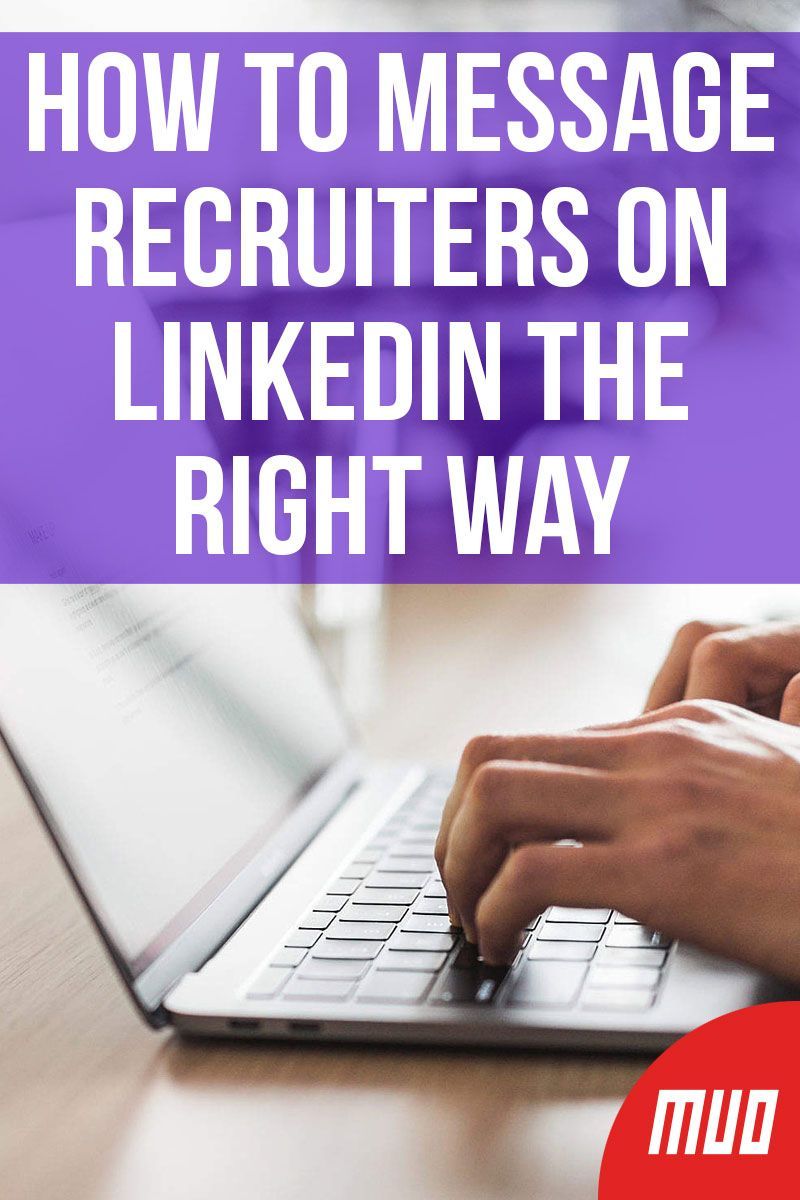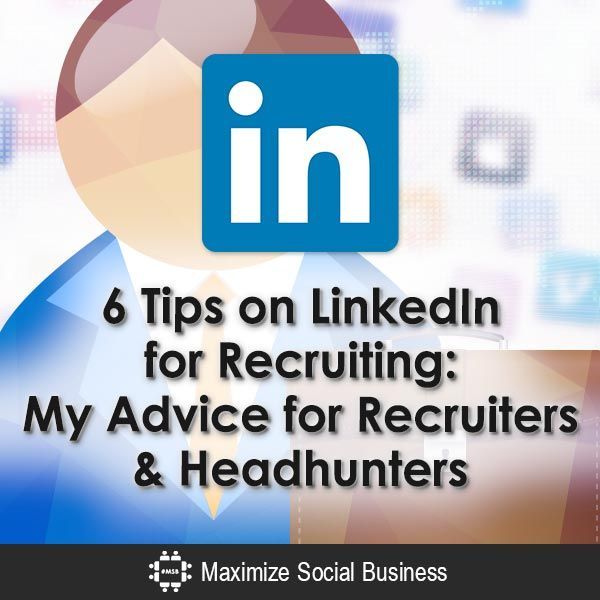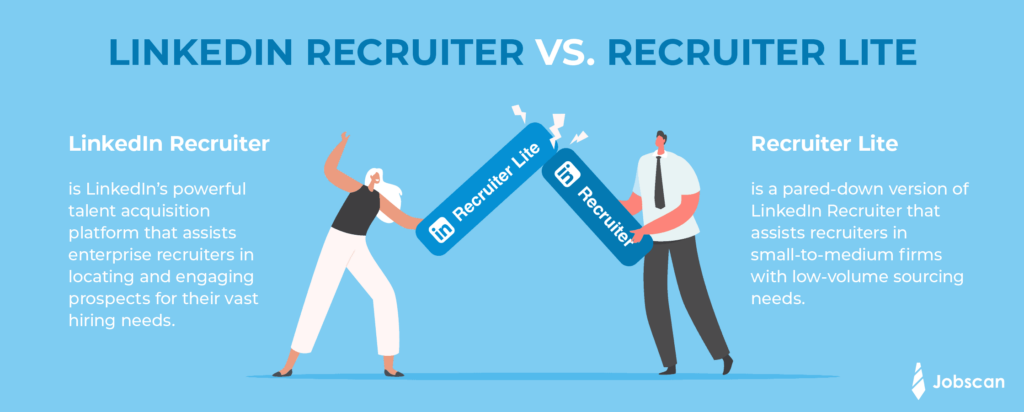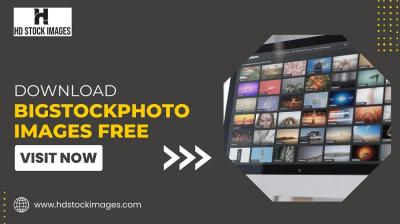Welcome to the world of LinkedIn, where your next career opportunity could be just a connection away! Engaging with recruiters on this platform can be a game-changer for your professional journey. In this post, we’ll explore how LinkedIn plays a pivotal role in recruitment and how to prepare your profile to catch recruiters' attention. Let’s dive in!
Understanding the Role of LinkedIn in Recruitment

LinkedIn is more than just a digital resume; it's a powerful tool for both job seekers and recruiters. Here’s why:
- Networking Opportunities: LinkedIn allows you to connect with industry professionals, which opens doors to potential job opportunities.
- Direct Access to Recruiters: Recruiters actively search for candidates on LinkedIn. A well-optimized profile can make you more visible to them.
- Showcasing Your Expertise: By posting articles, sharing insights, or engaging in conversations, you can position yourself as a thought leader in your field.
- Job Listings Galore: Recruiters post thousands of job openings on LinkedIn daily, providing a wealth of options for job seekers.
In fact, over 90% of recruiters use LinkedIn to find candidates for open positions. This means that if you're not leveraging this platform effectively, you might be missing out on some fantastic opportunities!
Moreover, LinkedIn's algorithm promotes active users. When you engage with posts or share content, you increase your visibility, which can attract recruiters to your profile. So, don’t just be a passive observer—join the conversation!
Also Read This: How to Bypass LinkedIn’s Connection Limit: A Safe Approach
Preparing Your LinkedIn Profile for Recruiter Engagement

Your LinkedIn profile is often your first impression on potential employers. To make it count, consider these essential tips:
- Profile Picture: Use a clear, professional headshot. A friendly yet polished image goes a long way in creating trust.
- Compelling Headline: Instead of just stating your job title, include keywords relevant to your skills and the roles you seek. For example, "Digital Marketing Specialist | SEO & Content Strategy Expert."
- Summary Section: Write a brief, engaging summary that highlights your career journey, skills, and what you’re passionate about. Aim for a conversational tone, like you’re speaking to a friend. For instance:
“Hi there! I'm passionate about creating compelling digital marketing strategies that drive engagement and growth. With over five years of experience in SEO and content creation, I thrive on helping brands tell their stories effectively.”
- Experience and Skills: Be thorough in detailing your work experience. Use bullet points to list achievements and responsibilities, and don’t forget to include relevant skills. Examples include:
| Role | Key Achievements |
|---|---|
| Digital Marketing Coordinator | Increased website traffic by 40% through targeted SEO campaigns. |
| Content Writer | Generated 1,000+ leads through compelling blog posts and social media content. |
- Recommendations: Ask colleagues or clients for recommendations. They add credibility to your profile and showcase your work ethic and skills.
- Engagement: Regularly share insights, articles, or comment on posts. This activity keeps your profile active and visible.
By optimizing your LinkedIn profile with these elements, you can significantly enhance your chances of engaging effectively with recruiters. Remember, your profile is a reflection of your professional brand—make it shine!
Also Read This: Can You Unsend a LinkedIn Message? What You Should Know
3. Crafting the Perfect Message to a Recruiter

When reaching out to a recruiter on LinkedIn, your message is your first impression, so making it count is crucial! Here are some tips to help you craft the perfect message:
- Personalize Your Approach: Start with the recruiter's name and mention something specific about their profile or the company. For example, "Hi [Recruiter’s Name], I noticed you specialize in tech placements at [Company Name]." This shows that you've done your homework and aren’t sending a generic message.
- Be Clear and Concise: Keep your message brief—aim for a couple of short paragraphs. Clearly state why you’re reaching out. For instance, "I'm an experienced software developer looking for new opportunities, and I would love to connect to explore potential fits."
- Highlight Your Value: Briefly mention your skills or accomplishments relevant to the roles you’re interested in. Say something like, "I’ve led projects that increased efficiency by 30% and have a strong background in [specific technologies]."
- Include a Call to Action: Encourage a response by inviting them to connect further. For example, "Would you be open to a quick chat to discuss opportunities at [Company Name]?" This gives the recruiter a clear next step.
Here’s a sample message to illustrate:
Hi [Recruiter’s Name],
I hope you’re well! I came across your profile while researching [Company Name] and was impressed by your focus on tech recruitment. I’m a software engineer with over 5 years of experience in full-stack development, and I’m currently exploring new challenges. I would love to connect and discuss any opportunities that might align with my background. Looking forward to hearing from you!
Best,
[Your Name]
In summary, a well-crafted message can significantly increase your chances of making a connection with a recruiter. Be genuine, show interest, and keep it professional!
Also Read This: What Should I Post on LinkedIn for Engaging Your Professional Network
4. Best Practices for Follow-Up Communication

Following up after your initial message is just as important as crafting it. Many candidates hesitate to follow up, but it’s an essential part of maintaining a professional relationship. Here are some best practices:
- Timing is Key: Wait about a week after your initial message before following up. This gives the recruiter time to respond while showing your interest. A simple reminder can go a long way!
- Be Polite and Professional: When you follow up, start with a polite greeting and thank them for their time. For instance, "Hi [Recruiter’s Name], I hope you’re having a great week!" This sets a positive tone.
- Reiterate Your Interest: Remind them briefly of your previous message and express your continued interest in connecting. You could say, "I wanted to follow up on my previous message regarding potential opportunities at [Company Name]. I’m really excited about the possibility of working there!"
- Keep It Short: Your follow-up should be concise—just a few sentences. Aim to respect their time while still expressing your enthusiasm. For example, "If you have any updates or if there's a good time to chat, I’d love to hear!"
- Use LinkedIn’s Features: If you don’t get a response, consider engaging with their posts or articles. This keeps you on their radar without being too pushy.
Here’s a follow-up message template:
Hi [Recruiter’s Name],
I hope you’re doing well! I wanted to follow up on my previous message about opportunities at [Company Name]. I remain very interested in potentially joining your team and would love to connect further if you have time. Thank you for considering my request!
Best regards,
[Your Name]
In conclusion, following up isn’t just a formality; it’s an opportunity to reinforce your interest and keep the conversation going. Remember, persistence with professionalism is key!
Also Read This: How to Add Your Resume on LinkedIn? A Complete Guide to Adding Your Resume to LinkedIn
5. Common Mistakes to Avoid When Messaging Recruiters
Messaging recruiters on LinkedIn can be a game-changer for your job search, but it’s easy to slip up. Here are some common mistakes you definitely want to avoid:
- Generic Messages: Sending a one-size-fits-all message is a missed opportunity. Personalize your approach! Use the recruiter's name and reference the specific job or company to show that you’ve done your homework.
- Too Much Formality: While professionalism is key, sounding too stiff can create distance. Aim for a friendly yet professional tone. For example, instead of saying, “Dear Recruiter,” try “Hi [Recruiter's Name].”
- Neglecting Your Profile: Before reaching out, ensure your LinkedIn profile is polished and up-to-date. Recruiters often check your profile after receiving your message. An incomplete or outdated profile can work against you!
- Being Overly Aggressive: Expressing enthusiasm is great, but pushing for a response can turn off a recruiter. Allow them time to respond and avoid sending multiple follow-up messages too soon.
- Ignoring Follow-up Etiquette: If you don’t hear back, it’s okay to follow up, but do so politely and with a gap of at least a week. A simple “I wanted to check in on my previous message” suffices.
By steering clear of these pitfalls, you can enhance your chances of making a positive impression. Remember, recruiters receive dozens if not hundreds of messages, so standing out for the right reasons is crucial!
Also Read This: Why Is LinkedIn Running Slowly? Common Issues and Fixes
6. Utilizing LinkedIn Features to Enhance Communication
LinkedIn offers a treasure trove of features designed to facilitate communication and networking. Here are some powerful tools to leverage:
- InMail: If you have a premium account, using InMail can be a fantastic way to reach out directly to recruiters. It allows you to send messages without needing a connection, increasing your chances of getting noticed.
- LinkedIn Groups: Joining LinkedIn groups related to your industry can help you connect with recruiters and other professionals. Engage in discussions, share insights, and don’t hesitate to reach out to recruiters within these groups.
- Job Alerts: Set up job alerts for positions that interest you. This feature sends notifications directly to your inbox, allowing you to apply quickly and showing recruiters your interest in their listings.
- Recommendations: Ask for recommendations from past colleagues or supervisors. When recruiters see endorsements from others on your profile, it boosts your credibility. Plus, it shows you value relationships!
- LinkedIn Stories: Use LinkedIn Stories to share insights about your job search journey, industry trends, or personal achievements. This feature allows for a more casual connection and helps recruiters see your personality.
Utilizing these features effectively can help you stand out in a competitive job market. Be proactive, engage authentically, and watch your networking efforts pay off!
Also Read This: Best Gemstones for Earrings to Pair with a White Dress
7. Success Stories: Real Examples of Effective Recruiter Interactions
When it comes to engaging with recruiters on LinkedIn, nothing speaks louder than success stories. These are real-world examples of individuals who navigated the platform with finesse and secured their dream jobs. Let's take a look at a few inspiring tales.
Example 1: Sarah's Strategic Connection
Sarah, a marketing professional, wanted to transition into a tech-focused role. Instead of sending a generic connection request, she took the time to research recruiters specializing in tech placements. In her personalized message, she highlighted her passion for technology and a recent project where she led a digital marketing campaign for a tech startup.
This approach paid off! The recruiter was impressed by Sarah’s initiative and not only accepted her connection but also introduced her to several relevant job opportunities. Sarah’s thoughtful outreach opened doors that would have remained closed with a simple “I’d like to connect.”
Example 2: Mike’s Engaging Follow-Up
Mike, an experienced software engineer, attended a virtual career fair where he met a recruiter from a well-known tech company. After the event, he promptly sent a thank-you message expressing his appreciation for the insights shared during the session. He also included a link to a project he had recently completed, showcasing his skills.
A week later, the recruiter reached out with a job opening that aligned perfectly with Mike’s expertise. His proactive follow-up not only kept the lines of communication open but also demonstrated his enthusiasm and professionalism. Mike’s story illustrates the importance of following up and reinforcing connections.
Example 3: Jessica’s Engaging Content Sharing
Jessica, a data analyst, understood the value of staying active on LinkedIn. She regularly shared articles and insights related to data analytics, which caught the eye of a recruiter who followed her content. One day, the recruiter commented on her post, sparking a conversation about a new role at their company.
By consistently sharing relevant content and showcasing her expertise, Jessica positioned herself as a thought leader in her field. This approach not only built her brand but also attracted opportunities she hadn’t actively pursued.
These success stories highlight that effective communication with recruiters goes beyond mere job applications. It’s about building relationships, showcasing your unique value, and being proactive in your approach. Remember, every interaction is an opportunity to connect and grow!
8. Conclusion: Building Lasting Relationships with Recruiters
In the ever-evolving job market, establishing strong relationships with recruiters can make all the difference in your career trajectory. Engaging with recruiters on LinkedIn isn’t just about landing a job; it’s about creating a network of support and opportunities.
Here are a few key takeaways for building lasting relationships:
- Be Authentic: Authenticity shines through in your interactions. Share your true self, including your experiences and aspirations. Recruiters appreciate candidates who are genuine.
- Stay Engaged: Don’t let your connection fade after an initial conversation. Regularly engage with your recruiter’s content by liking or commenting on their posts. This keeps you on their radar.
- Offer Value: Whether it’s sharing insights, articles, or your skills, find ways to offer value to your recruiter. Show them you’re not just looking for opportunities but are also invested in the industry.
- Be Open to Feedback: Constructive criticism can help you grow. Listen to recruiters when they provide feedback on your resume or LinkedIn profile and use it to improve your approach.
Remember, the goal isn’t just to find a job but to cultivate a professional relationship that can lead to future opportunities. By consistently applying these tips, you’ll not only engage effectively with recruiters but also set the stage for a rewarding career journey. Happy networking!
 admin
admin








